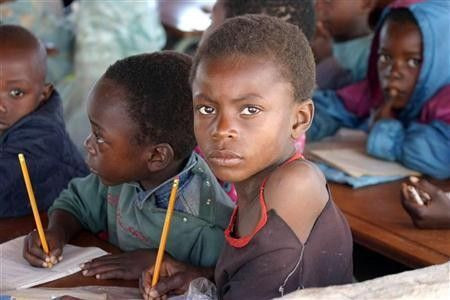Poorest Of The Poor: UN Releases Report On World’s 'Least Developed Countries'

Forty-eight countries, from Afghanistan to Zambia, made the U.N.’s list of Least Developed Countries of 2012, a rather dubious honor, to say the least.
Thirty-three of the 48 countries are in Africa. Nine are Asian, and five are Pacific Island nations.
Also included on the list is Haiti, which recently complained that the U.N. is not taking responsibility for the cholera epidemic that has killed more than 8,000 people since the January 2010 earthquake. The Haitian government says the infection began with U.N. peacekeepers from Nepal who were in the country.
The report, put out every three years by the U.N.’s Economic and Social Council, evaluates countries based on three criteria: average household income, based on the country’s gross national income; human health, nutrition, average level of school achieved, and literacy rates (called “human assets"); and economic health and vulnerability. If countries meet the threshold on all three criteria and have a population of less than 75 million, they are named an LDC, provided the government accepts the status.
To be added to the LDC list, a country must have a gross national income of less than $992 per capita. To graduate off of the list, the GNI must rise above $1,190 per capita.
The report said that, owing partly to the euro zone crisis and subsequent decrease in the availability of foreign aid money, the economies of the designated LDC’s grew at much slower rate in 2012 than in 2011. African nations showed the slowest rate of growth.
“Given their high dependence on external economic conditions, LDCs were unable to escape this broad-based slowdown, and the rate of deceleration was similar to that of developing countries and advanced economies,” the report said.
This could be a huge problem in the very near future, the U.N. said, because the demographics of LDCs overwhelmingly skew young. “If this pattern continues, along with slow global recovery, it may damage employment prospects in LDCs. The significance of employment for LDCs cannot be overemphasized. The relatively young demographic structure of LDCs means that increasing cohorts of young are entering the labor market and will continue to do so.”
This could also result in “brain drain,” as university-educated young people leave their home countries in search of better prospects.
Only three countries to date have managed to graduate out of LDC status, the report said: Botswana in 1994, Cape Verde in 2007, and the Maldives in 2011.
The report concluded with several recommendations, including ways LDCs could attract young people back home, and how to better utilize foreign remittances and aid coming in.
The country whose bank account was in the most trouble was Samoa. Angola was in the best shape of the lot.
The full list of countries on the list is:
Afghanistan, Angola, Bangladesh, Benin, Bhutan, Burkina Faso, Burundi, Cambodia, Central African Republic, Chad, Comoros, Democratic Republic of the Congo, Djibouti, Equatorial Guinea, Eritrea, Ethiopia, Gambia, Guinea, Guinea-Bissau, Haiti, Kiribati, Lao People’s Democratic Republic, Lesotho, Liberia, Madagascar, Malawi, Mali, Mauritania, Mozambique, Myanmar, Nepal, Niger, Rwanda, Samoa, Sao Tome and Principe, Senegal, Sierra Leone, Solomon Islands, Somalia, Sudan, Timor-Leste, Togo, Tuvalu, Uganda, United Republic of Tanzania, Vanuatu, Yemen and Zambia.
© Copyright IBTimes 2025. All rights reserved.





















